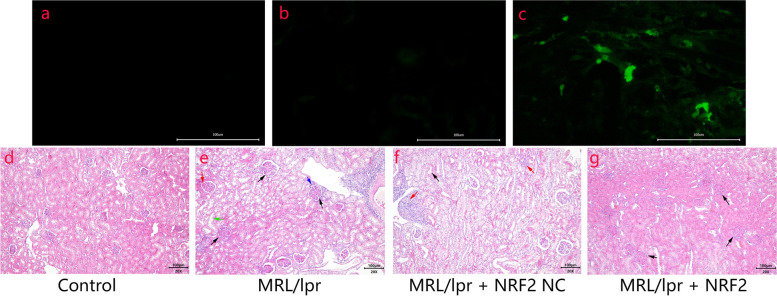Fig. 1.
Nrf2 adenovirus verification and HE staining. a-c Immunofluorescence verification of adenovirus effective transduction: immunofluorescence of Nrf2 vector group (c) is significantly stronger than that of control group (a) and Nrf2 empty-load group (b). d-g Hematoxylin–eosin staining of kidney histology: in the control group, glomeruli and renal tubules structures are histologically normal with a small amount of hyperemia near some glomeruli but without inflammatory cell infiltration. In MRL/lpr mice (model group), the glomerulus is congested (black arrow) and structurally disordered, a small amount of hyperemia is observed near some glomeruli (red arrow), several renal tubular epithelial cells are exfoliated to the lumen (green arrow), and inflammatory cell infiltration can be detected (blue arrow). In the Nrf2 empty-load group, the renal tubular lumen is congested, the boundary between the cells is unclear (red arrow), several renal tubular epithelial cells shed into the lumen (black arrow), and obvious inflammatory infiltration is observed. In the Nrf2 vector group, the glomerulus is congested (black arrow), and the disorder of tubular structure is alleviated compared with that in the model group

